Great Sand Dunes National Park Colorado: 1st Time Visitor Guide
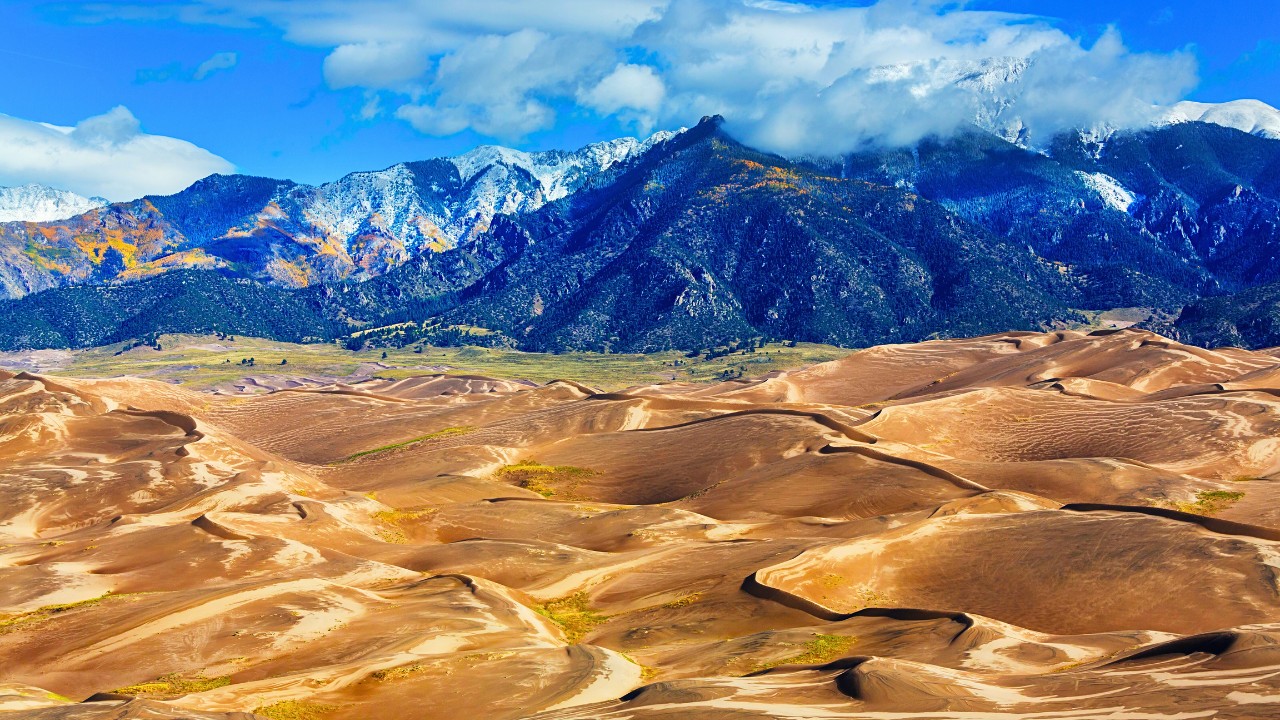
Located in southern Colorado, Great Sand Dunes National Park and Preserve is home to the tallest sand dunes in North America. Towering up to 750 feet, these golden dunes rise dramatically against the backdrop of the Sangre de Cristo Mountains. Whether you’re coming for the thrill of sandboarding, to splash in the seasonal creek, or simply to take in the surreal landscape, this park offers a one-of-a-kind experience for first-time visitors and in this guide you’ll learn about the best ways to explore it when you visit!
Overview
-
Location: Southern Colorado, near the town of Alamosa
-
Size: Over 149,000 acres
-
Main Attractions: Sand dunes, Medano Creek, alpine trails, wetlands, and grasslands
-
Popular Activities: Hiking, sandboarding, wildlife viewing, stargazing, 4WD adventures
This park combines diverse ecosystems in a single destination, making it perfect for both relaxation and adventure.
Best Times to Visit
-
Late Spring (May–June): The most popular time to visit, with comfortable temperatures and flowing Medano Creek, perfect for wading and sand play.
-
Early Fall (September–October): Cooler weather, fewer crowds, and fall colors in the nearby mountains make this a peaceful time to explore.
-
Summer (July–August): High temperatures mean the sand can get extremely hot during midday. Plan to visit early in the morning or later in the evening.
Winter visits are possible but can be cold and snowy, with limited access to some parts of the park.
Photos:
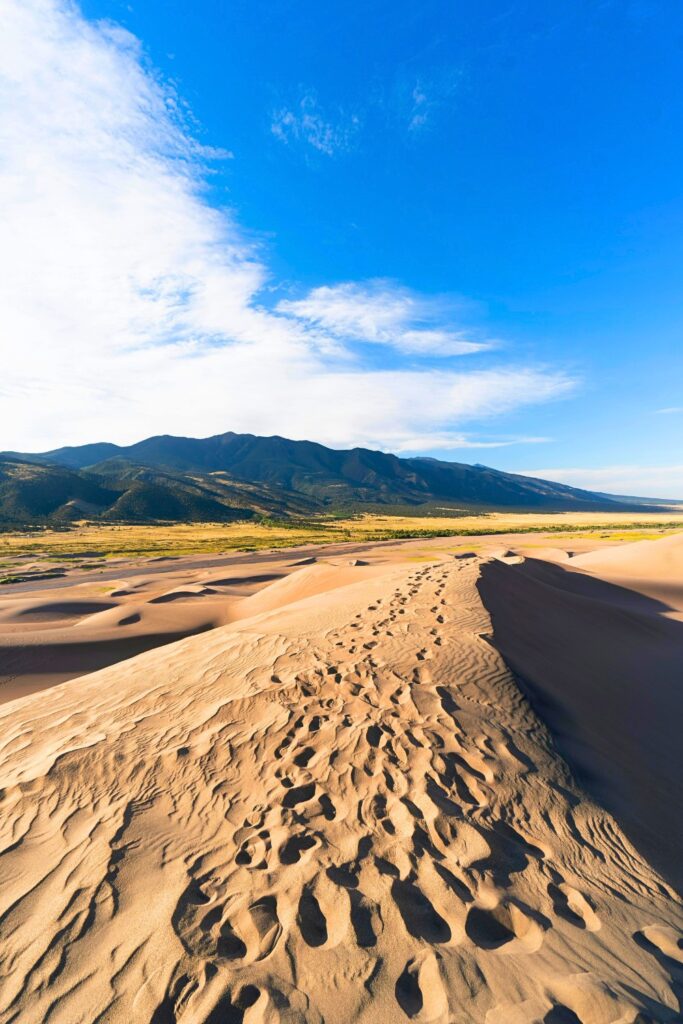
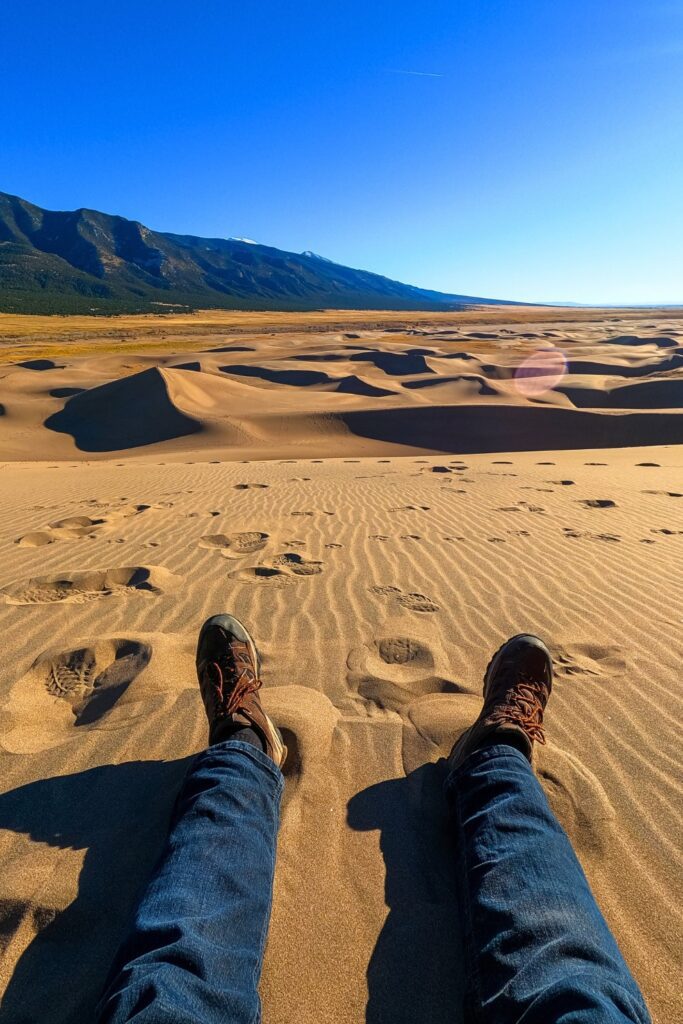
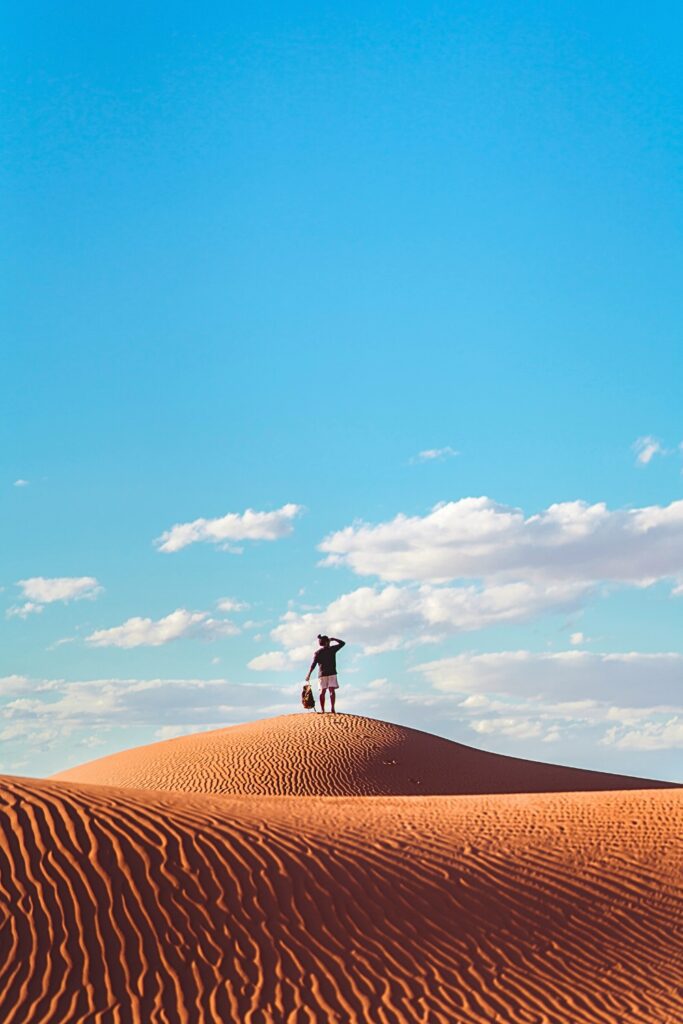
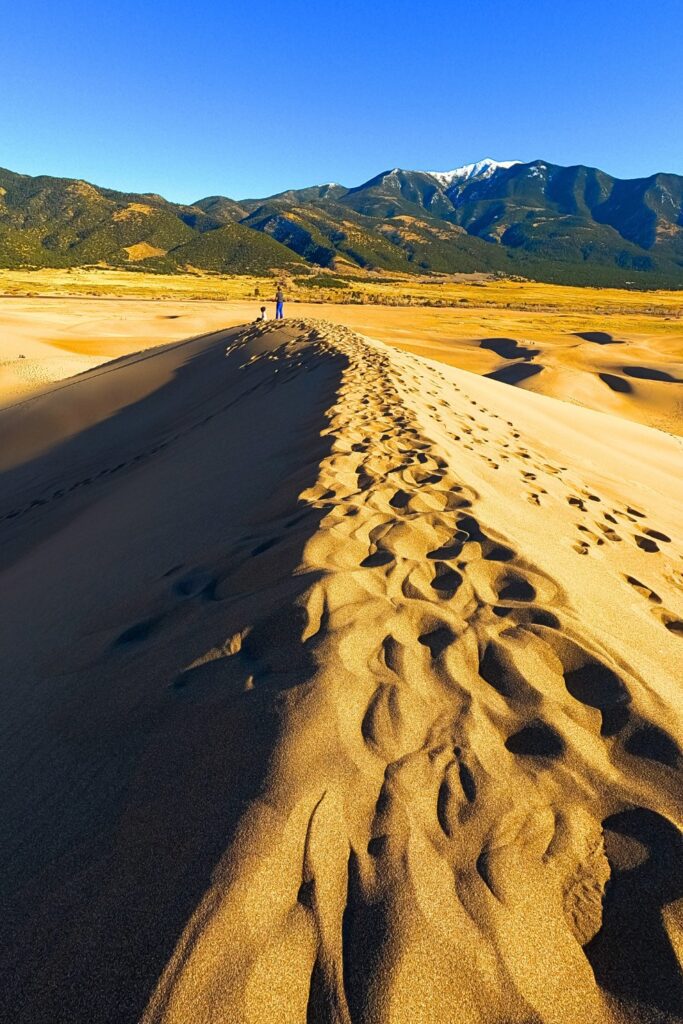
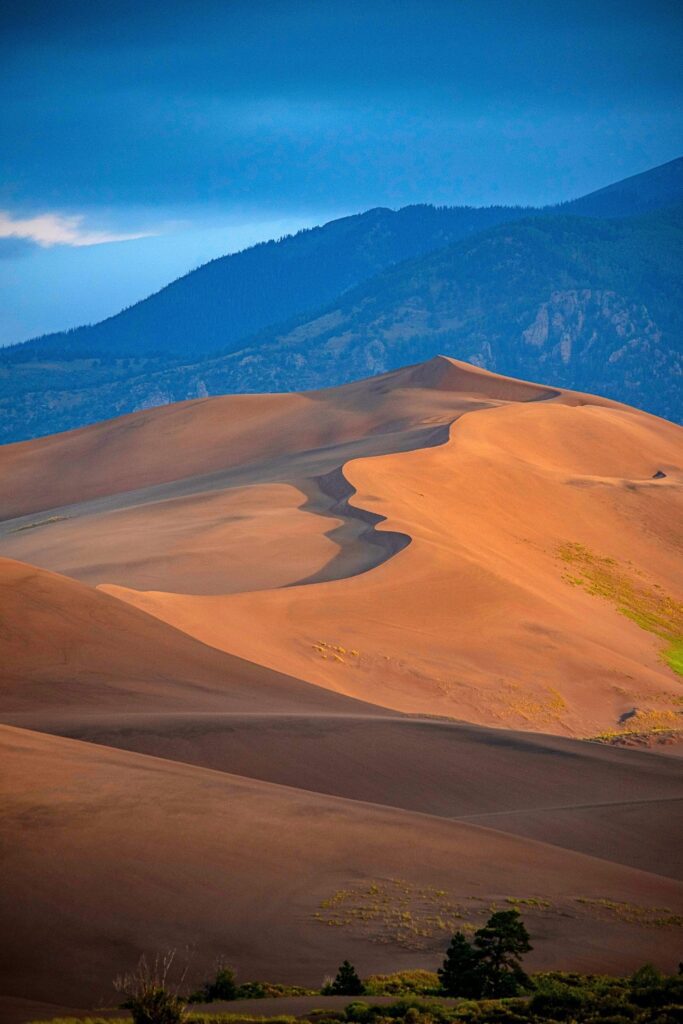
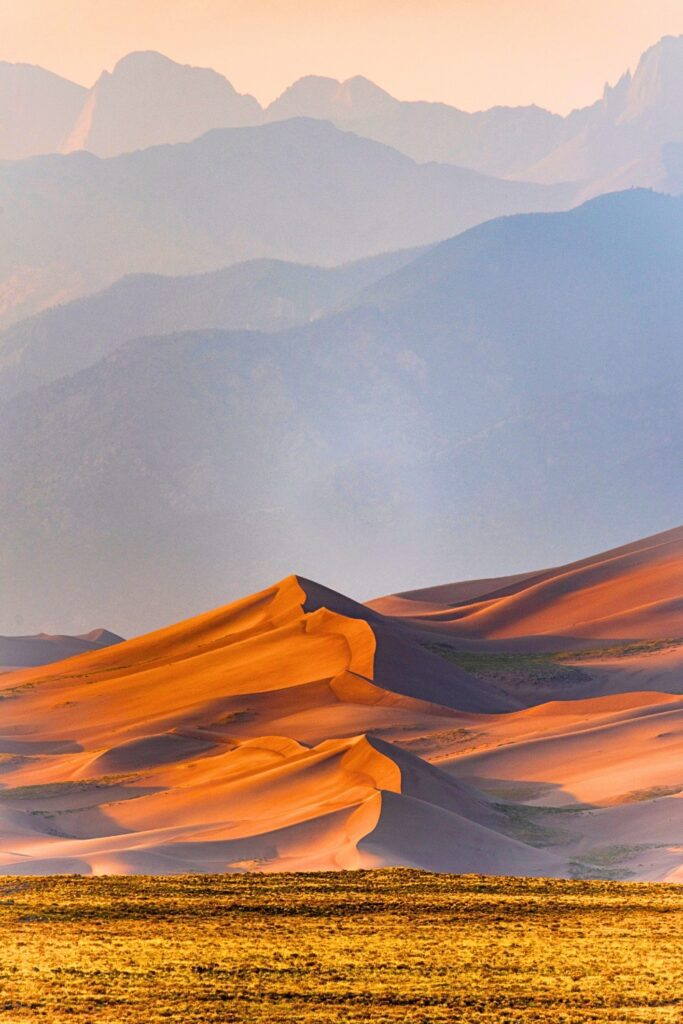
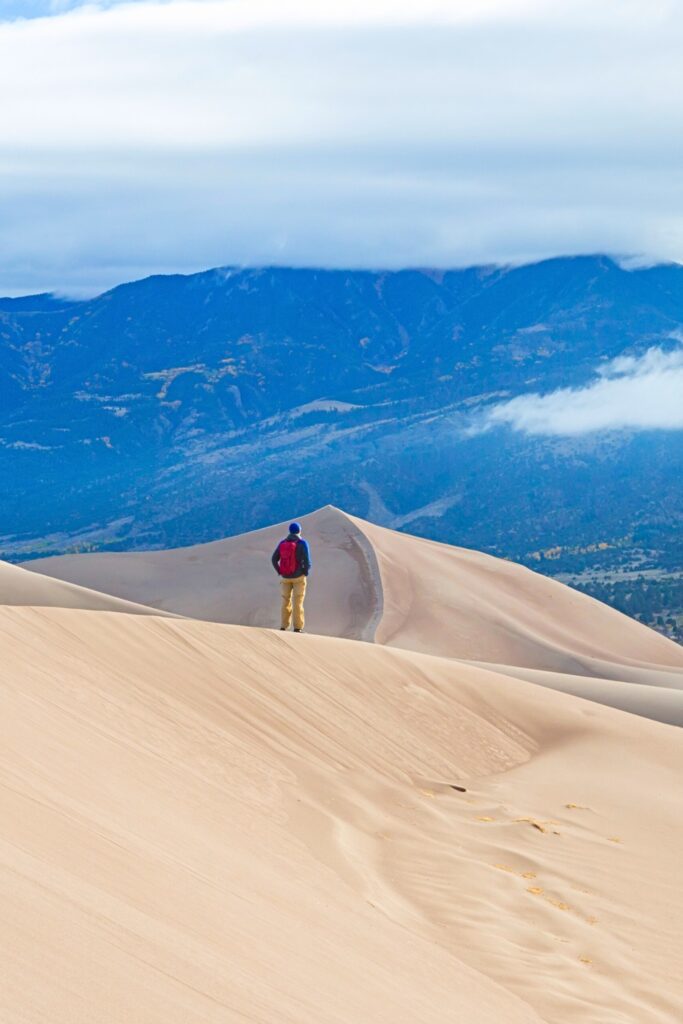
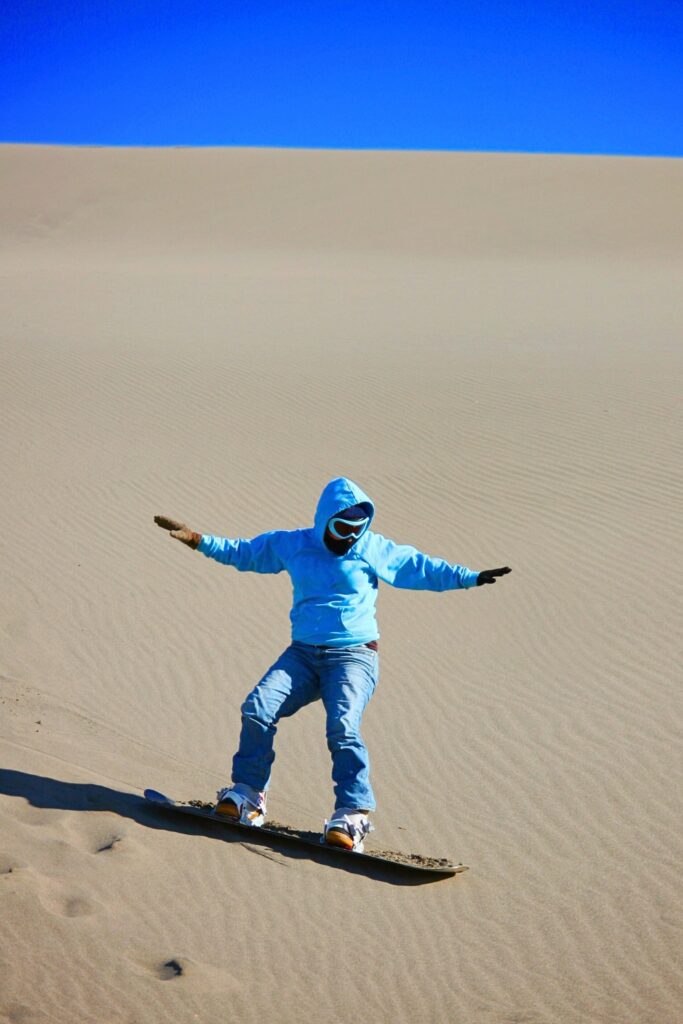
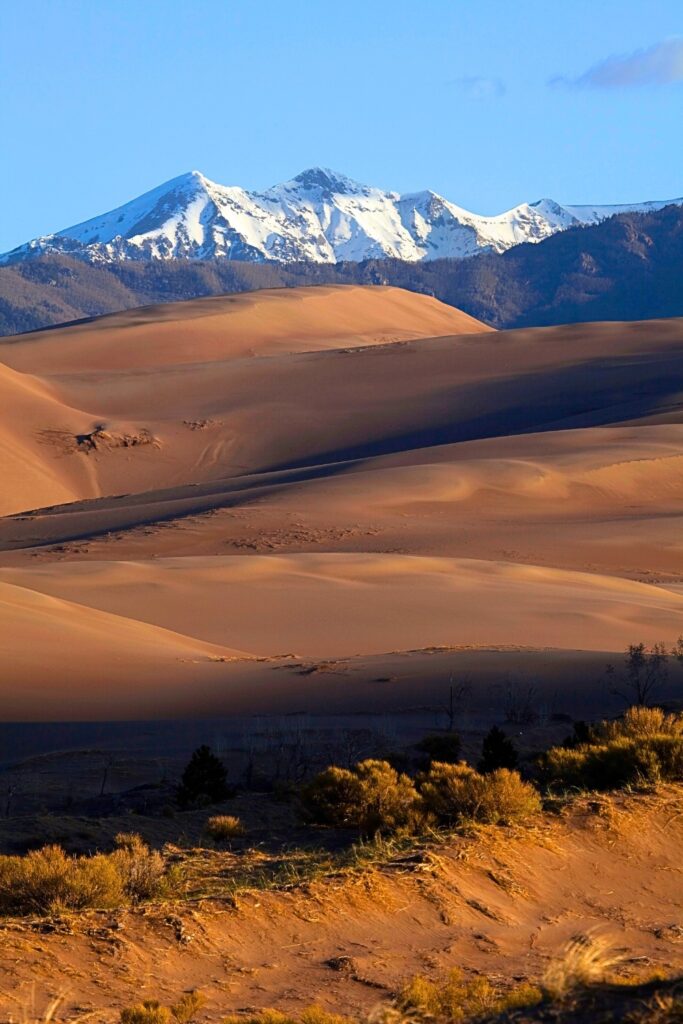

10 Best Things to Do
There’s a great deal of things to do in Great Sand Dunes and I strongly recommend this page on Tripadvisor, where you can get the top recommendations from visitors (and secret areas to see), but here are the most popular activities:
-
Climb High Dune – A moderate challenge that rewards you with panoramic views of the entire dune field.
-
Sandboarding or Sand Sledding – Bring or rent a sandboard or sled and glide down the soft slopes (rental options).
-
Wade in Medano Creek – When the creek is flowing (typically late spring), it’s one of the park’s most fun and family-friendly attractions.
-
Stargazing – This designated Dark Sky Park offers excellent conditions for viewing constellations and the Milky Way.
-
Drive Medano Pass Primitive Road – For high-clearance 4WD vehicles only, this rugged road crosses creeks and offers secluded camping spots.
-
Montville Nature Trail – A short, shaded hike perfect for families or those looking for a quick nature escape.
-
Hike to Zapata Falls – Just outside the park, this refreshing waterfall hike is a hidden gem.
-
Wildlife Viewing – Look for mule deer, elk, foxes, and even black bears in the early morning or evening hours.
-
Photography – The contrast between towering dunes and snow-capped mountains makes for stunning photos, especially at sunrise and sunset.
-
Attend a Ranger Program – During peak seasons, ranger-led programs offer deeper insight into the geology, wildlife, and history of the park.
Best Hikes (Beginner to Advanced)
Beginner Hikes:
-
Montville Nature Trail (0.5 miles): A short, looped trail with shaded forest and views of the dunes.
-
Zapata Falls Trail (1 mile): A rocky path leading to a hidden waterfall—bring water shoes for the final scramble.
Moderate Hikes:
-
High Dune on First Ridge (2.5 miles round trip): A steep hike on sand to one of the tallest accessible dunes with sweeping views.
-
Mosca Pass Trail (6.2 miles round trip): A forested hike that follows an old wagon route into the mountains.
Advanced Hikes:
-
Star Dune (7 miles round trip): The tallest dune in North America; expect a strenuous, sandy trek but unmatched views at the summit.
5 Hidden Gems in Great Sand Dunes National Park
While most visitors flock to High Dune or Medano Creek, the park holds several lesser-known treasures that offer serenity and adventure beyond the main areas.
-
Hidden Dune Valley: Venture past Star Dune to find a quiet bowl of rolling dunes few people reach. Perfect for solitude and sunrise photos.
-
Sand Ramp Trail: A less-traveled backpacking route skirting the dune field with stunning views and access to remote campsites and forested sections.
-
Castle Creek Picnic Area: Located near the park entrance, this shaded spot has views of the dunes and is a great place for a quiet lunch away from crowds.
-
Deadman’s Creek Trail: A short, scenic trail just outside the park near Mosca that offers quiet walking, creek views, and wildflowers in spring.
-
Medano Lake: Reached via a challenging 4WD road and then a hike, this alpine lake sits above the dunes and offers outstanding high-altitude scenery.
1–5 Day Itinerary Samples
Day 1 – Quick Visit (Half-Day to Full-Day)
-
Walk Medano Creek (if flowing)
-
Climb High Dune
-
Picnic at Castle Creek
-
Stargazing after dark
Day 2 – Full-Day Adventure
-
Early hike to Star Dune
-
Lunch in Alamosa or picnic near dunes
-
Visit Zapata Falls in the afternoon
-
Evening ranger program or more stargazing
Day 3 – 3-Day Itinerary
-
Day 1: Explore Medano Creek, hike High Dune
-
Day 2: Sandboarding, hike Mosca Pass Trail
-
Day 3: Visit Zapata Falls and Deadman’s Creek, sunset photos
Day 4 – 4-Day Itinerary
-
Days 1–3 as above
-
Day 4: Drive Medano Pass (4WD) and hike to Medano Lake
Day 5 – 5-Day Itinerary (Best for Full Immersion)
-
Day 1: Arrival, sunset dune walk
-
Day 2: Star Dune sunrise hike
-
Day 3: Sandboarding and explore Hidden Dune Valley
-
Day 4: Hike Sand Ramp Trail, overnight in backcountry
-
Day 5: Return, Zapata Falls, and relax in Alamosa before departure
Packing List
Clothing:
-
Moisture-wicking shirts and breathable hiking pants
-
Wide-brimmed hat and sunglasses
-
Lightweight jacket or hoodie for early mornings
-
Closed-toe shoes or hiking sandals (the sand gets hot)
Gear:
You can get a majority of the things you need to visit the park on my Amazon gear list but here’s the major things I recommend:
-
Backpack with hydration system or water bottles
-
High-SPF sunscreen and lip balm
-
First-aid kit, map, and compass
-
Camera or smartphone for photography
-
Flashlight or headlamp if staying after dark
Optional:
-
Sandboard or sled (rent before entering the park)
-
Water shoes or sandals (for Medano Creek)
-
Trekking poles for added stability in soft sand
Where to Stay
- Inside the Park: Piñon Flats Campground is the only developed campground within the park, offering scenic views and close access to the dunes.
- Outside the Park: Closest hotels to Great Sand Dunes
Things to Know Before You Go
-
Entrance Fee: $25 per vehicle, valid for 7 days
-
Open Year-Round: The park is open 24 hours a day, but some services and roads may be seasonal
-
Altitude: The park ranges from 7,500 to over 13,000 feet, drink plenty of water and give yourself time to acclimate
-
Sand Temperature: In summer, the surface of the dunes can reach 120°F, wear closed-toe shoes and avoid mid-day climbs
-
Pets: Allowed in certain areas but must be on a leash and cleaned up after
Final Thoughts
Great Sand Dunes National Park is a destination that defies expectations. With its towering dunes, diverse ecosystems, and stunning stargazing, it offers a blend of adventure and tranquility. Whether you’re climbing to the top of Star Dune or splashing in Medano Creek, a trip here is bound to be unforgettable. Prepare well, pack smart, and enjoy every moment in this incredible landscape!
If you love these kinds of places, I’d also recommend you look into exploring Pink Sand Dunes National Park located in Utah, not too far from the town of Kanab. In any case, this national park (Great Sand Dunes) makes for an awesome stop for anyone looking for Colorado road trip ideas and it’s one of my top recommendations on what to see in the state!

Do we need to make reservations to a day trip to the sand dunes?
For just entering the park and exploring, no. If you’re checking out special spots, that may require a permit. You can check out the official NPS website.